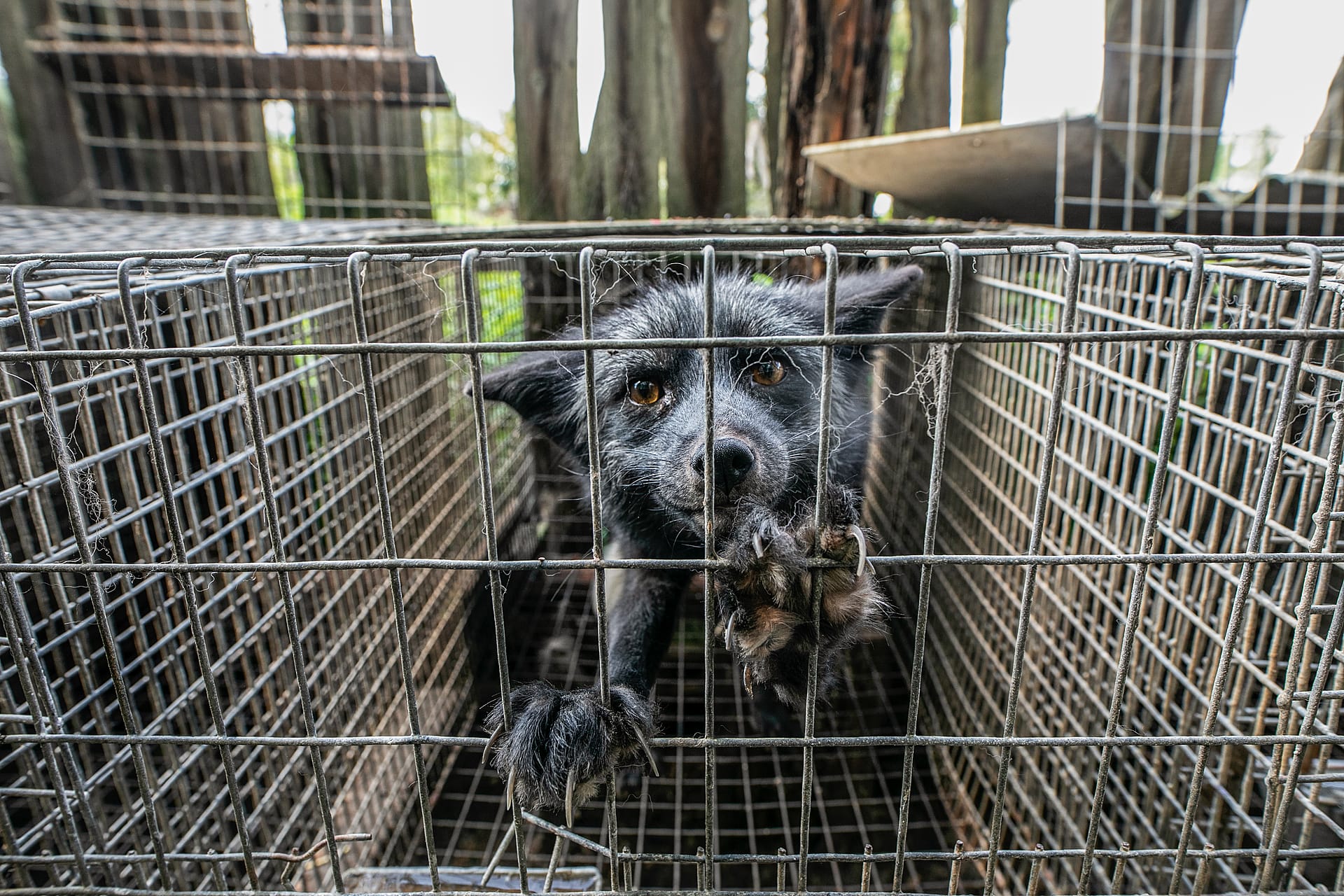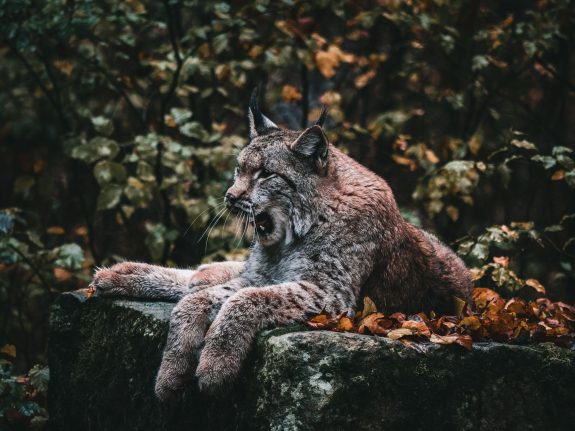New government documents obtained by The Fur-Bearers have revealed shocking new information—fur farms in Canada are caging and killing even more species than was known by the public. It’s well-publicized that minks, foxes, and chinchillas are bred and slaughtered for their fur, but it turns out that they aren’t the only victims of this horrifying industry.
In Alberta and Saskatchewan, six fur farms have acquired licenses to breed wolves, bobcats, and lynxes. Notably, the largest Saskatchewan fur farm, operational since 1996, houses 23 lynxes, 25 wolves, and 11 foxes. This finding marks the first known instance of a wolf farm in Canada.
The breeding of iconic wildlife for their fur shines a troubling spotlight on the cruelty of Canada’s fur farm industry. These additional species are not known to be farmed elsewhere; a recent review of the global fur industry by The Fur-Bearers shows that wolves, bobcats, and lynxes are not among the 15 species which are commonly farmed in at least 19 other countries.

Photo: Andrew Skowron | We Animals Media
Animal suffering on Canadian fur farms is well-documented. Foxes and minks are held captive inside small, barren, wire cages, over their own filth, without any mental stimulation. They are deprived of the ability to fulfill nearly every biological need. It’s common for these animals to be exposed to the elements in outdoor cages, or be locked up in filthy warehouses. Exposés have repeatedly shown animals in severe mental distress due to their confinement. They may perform repetitive behaviours like pacing or circling, or self-mutilate due to stress and boredom. Cannibalization, rotting animals in cages alongside live animals, and untreated festering wounds have also been exposed.
Fur farms use specific slaughter methods to avoid damaging the animals’ fur. Minks are typically gassed to death at six months old, while foxes are killed by anal electrocution. Other common methods include poisoning and neck-breaking. Unlike at slaughterhouses, there is no government inspector on-site when animals are killed.
This cruel and outdated industry causes immense suffering to animals, all for the sake of fashion. Wolves, bobcats, lynxes, chinchillas, rabbits, foxes, and minks belong in the wild, not in captivity and to be killed for their fur. Join us in calling on the federal government to end fur farming in Canada, just like many countries around the world have already done.




